A town with 2000 years of history at the confluence of the three rivers Danube, Inn and Ilz. The Celts and the Romans have already built their fortifications here. In the 6th century, Bavarians occupied the country and already in 739 the town was elevated to the status of a bishop's see. Thanks to this fact, the city of Passau today has the largest baroque cathedral north of the Alps, St. Stephen's Cathedral.
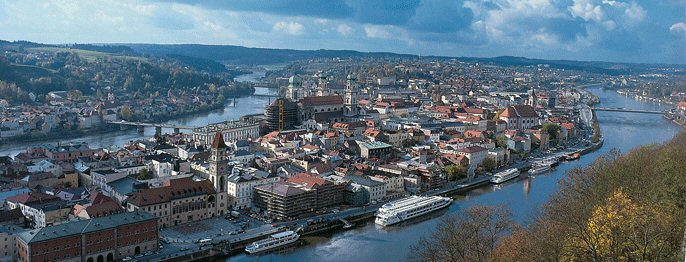
Passau lies on a peninsula between Inn and Danube.
The Diocese of Passau and Vienna
In the year 1147, due to the contract of Mautern between the Babenberg Margrave Leopold IV and the Passau Bishop Reginmar, the first Romanesque St. Stephan's Church in Vienna was consecrated. At the beginning of the 14th century, the Gothic new building of St. Stephen's Cathedral in Vienna was begun with the construction of a three-nave choir hall. On 23 April 1340 the completed choir was solemnly consecrated by Bishop Albert of Passau. At that time Vienna belonged to the diocese of Passau.
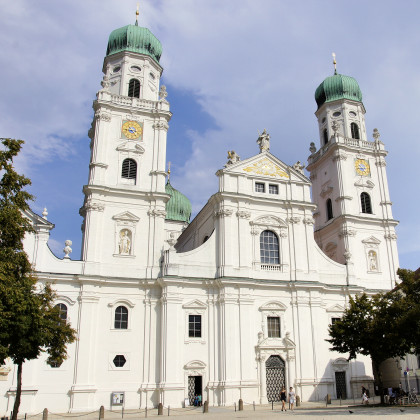
Five construction periods can be distinguished for St. Stephen's Church in Passau
-
The bishop's church of Agilolfingia around 720,
-
the early gothic cathedral, built between 1280 and 1325,
-
the late gothic eastern part (1407-1560) and
-
the baroque new building, erected between 1668 and 1693. the town fire of 1662 completely destroyed the buildings of the first construction periods. Apart from the building shell of the late Gothic eastern part, nothing has been preserved.
-
The Italian master Carlo Lurago was commissioned with the Baroque reconstruction, including the remaining Gothic parts. Giovanni Battista Carlone was entrusted with the entire interior decoration, with its lavish stucco work and altar structures of the Italian High Baroque. The frescos were created by Carpoforo Tencalla. The largest Baroque church interior north of the Alps and the most important Baroque church of Italian influence on German soil was created. The Passau cathedral decoration was to become a trend-setter for decades for the Danube art space off the Alps.
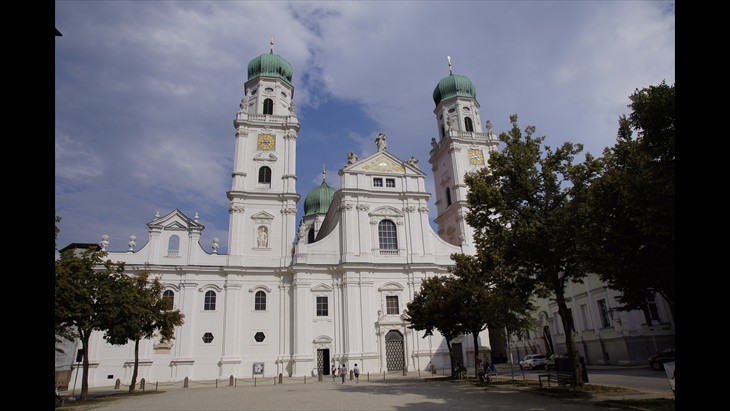

 was built in Vienna in 1726.
was built in Vienna in 1726.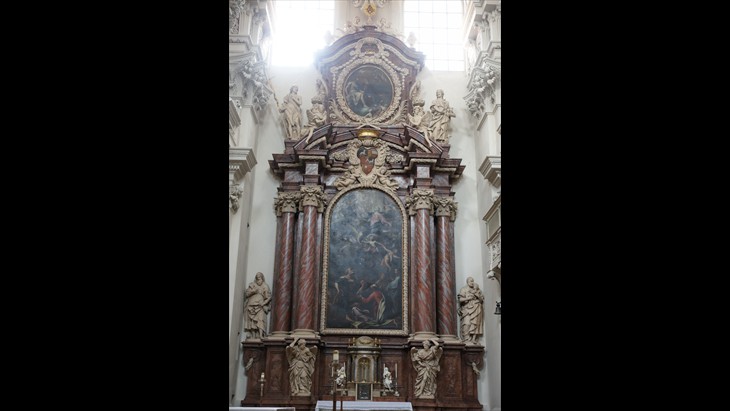 Saint Stephen
Saint Stephen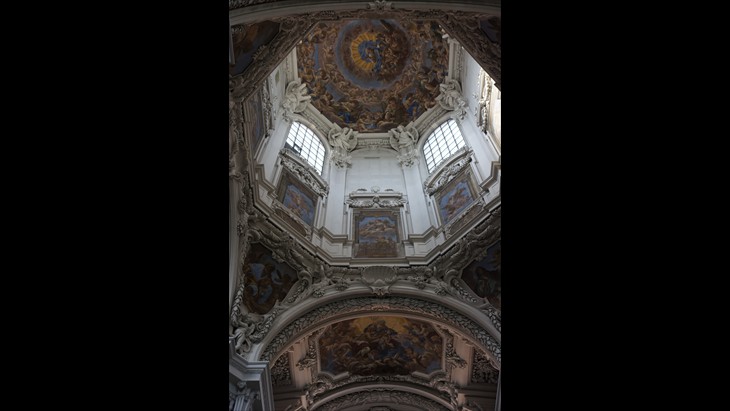
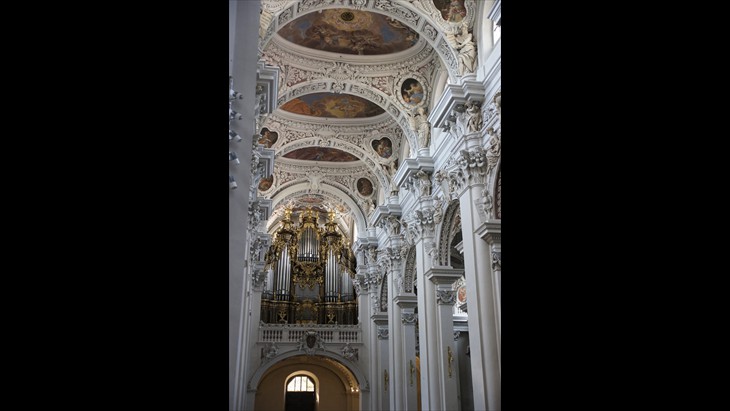 with left side organ
with left side organ
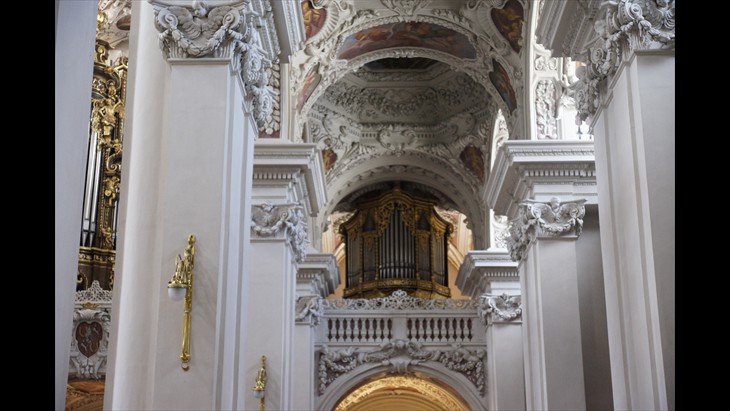
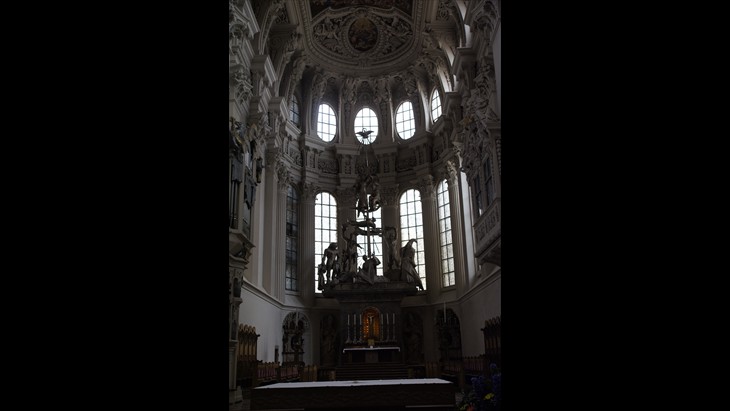
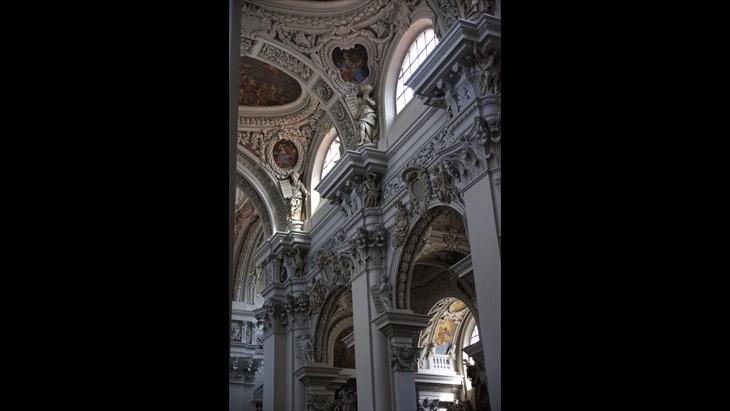 on the main nave
on the main nave
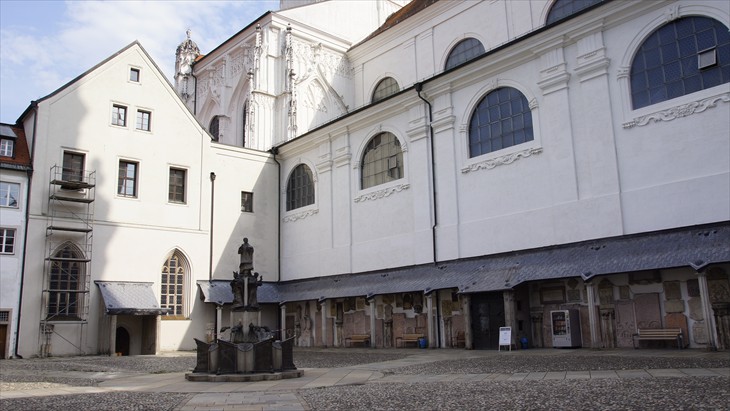
 in the cloister courtyard
in the cloister courtyard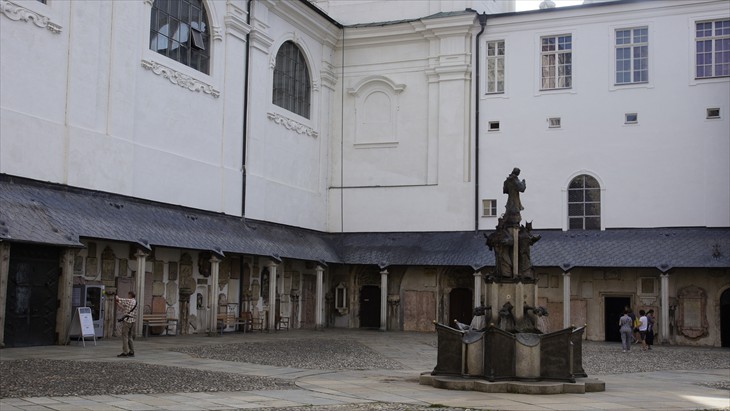
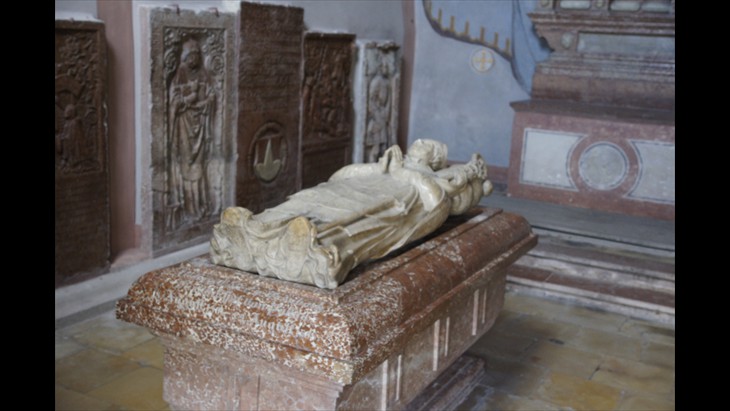 High grave of bishop Urban von Trennbach (1561 - 1598)
High grave of bishop Urban von Trennbach (1561 - 1598)
The Passau Cathedral Organ
is the largest cathedral organ in the world. It consists of five spatially separated works:
the main organ, epistle and gospel organ on the western temples, the choir organ at the entrance to the chancel and the
long-distance organ in the attic in the cathedral nave. In the latter case, the sound comes into the church room through
the "Heiliggeistloch". All five organ works can be played from the main console in the gallery,
a technical marvel in itself.
In total the organ has 17774 pipes and 233 stops.
Organ concerts take place every weekday at 12.00 and every Thursday at 19.30.
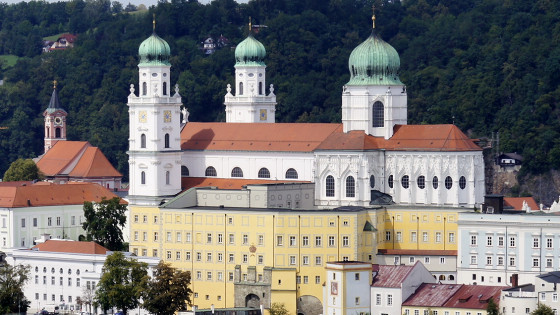
The cathedral seen from Mariahilf church. Click on the picture, the view from the viewing platform on Mariahilf Mountain (Mariahilferberg) can be enlarged.
Learn more about the church on the
and the Mariahilf painting there.
Walk in the old town
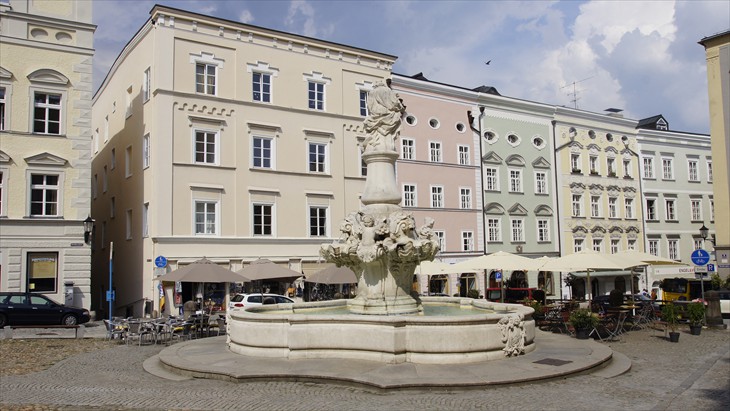

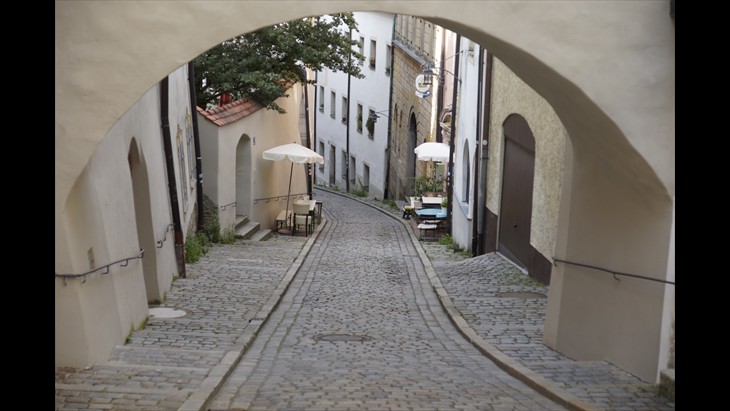 from Residenzplatz to the Danube
from Residenzplatz to the Danube at the Residence Square
at the Residence Square
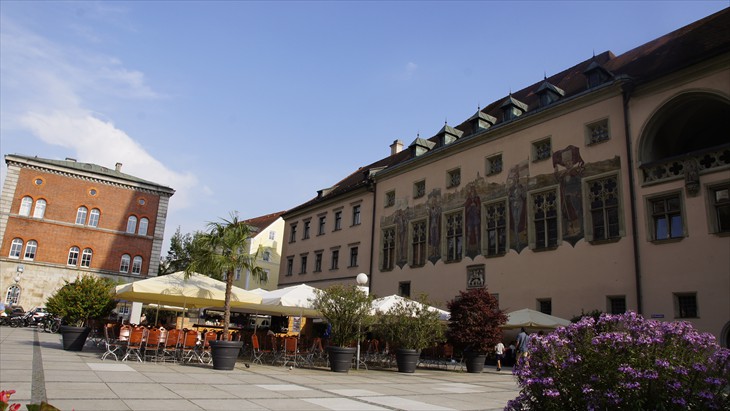
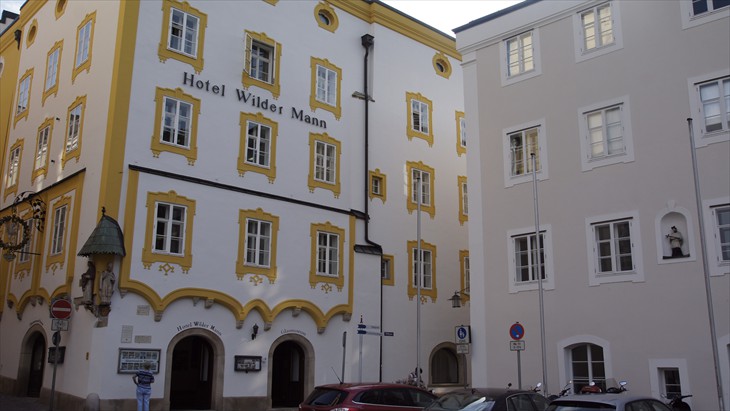 who finds the small Nepomuk statue (facade niche)
who finds the small Nepomuk statue (facade niche)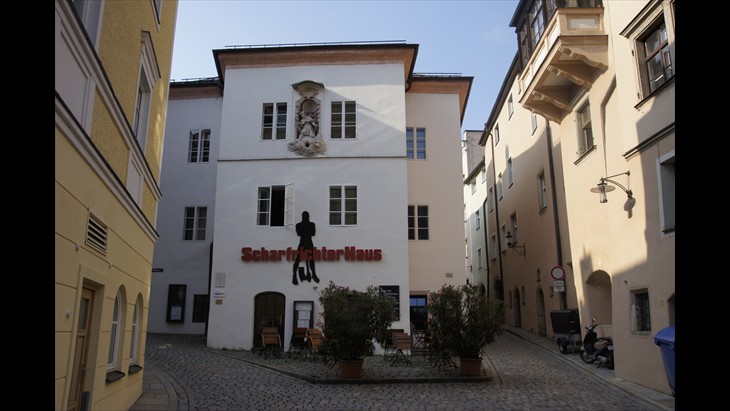 with Nepomuk sculpture
with Nepomuk sculpture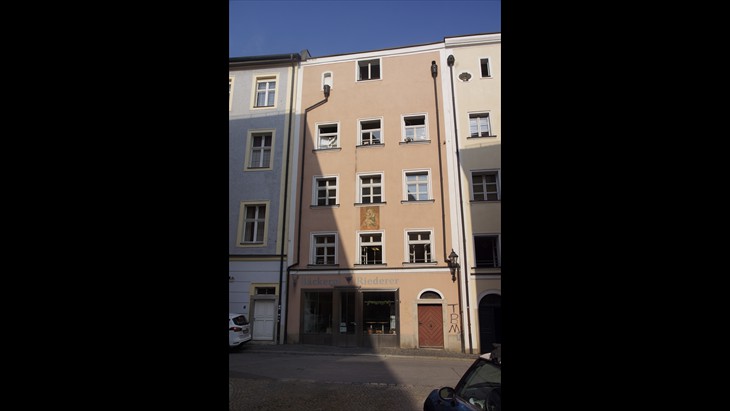

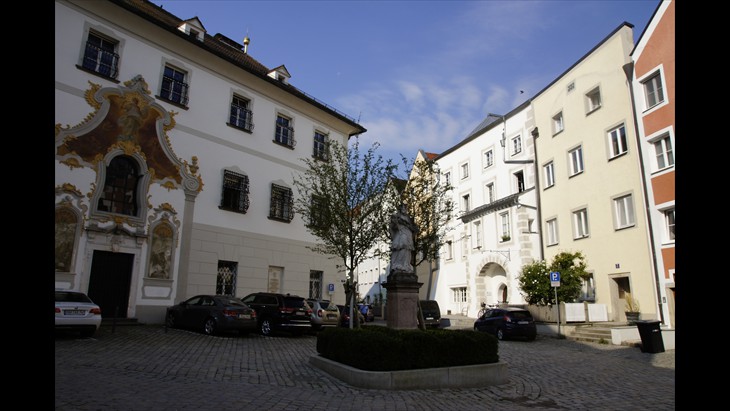
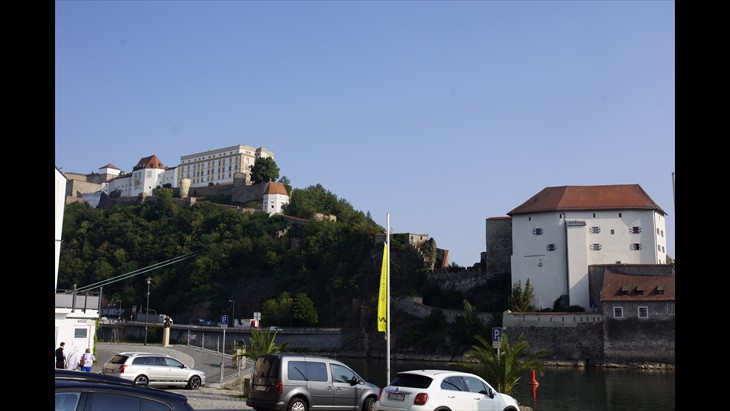
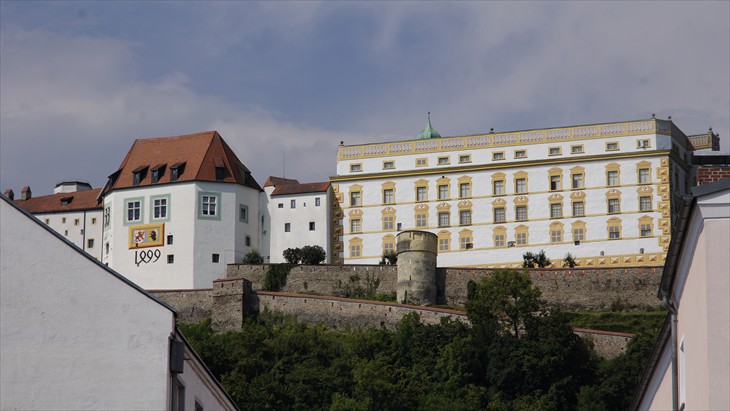 Oberhaus Museum
Oberhaus Museum
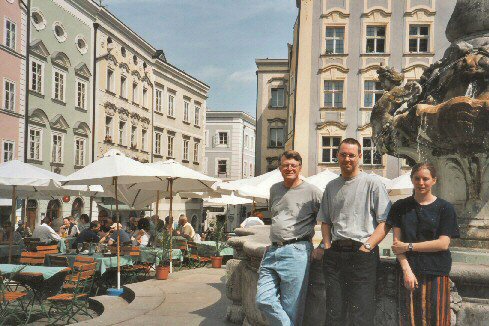
The city entices you to linger, but the Danube cycle path is waiting.


Danube cycle route
